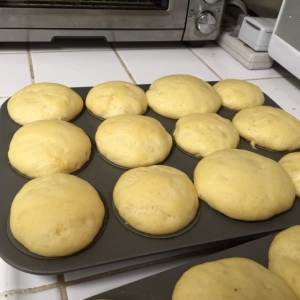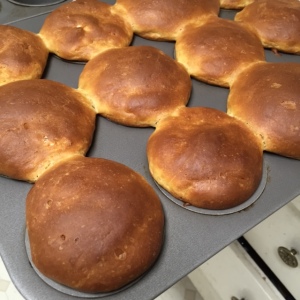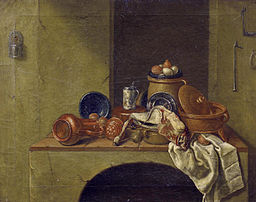Wednesday, I shared some history of traditional Easter and spring cooking. Today, I am sharing a couple of old recipes for tansy pudding, as well as links to contemporary recipes for tansy pudding.
Again, tansy is a purifying herb. Used sparingly, it can be healthful. But always do your research on the effects of an herb before using.
Tansy Pudding
Beat twelve eggs, keeping out four whites, a quart of cream, the crumbs of an halfpenny roll grated, a little orange flower or rose water, cinnamon, nutmeg, and salt, a spoonful of tansy juice, half a pint of spinage juice, half a pound of sugar.
Butter your dish, and bake it.
The Lady’s, housewife’s and cookmaid’s assistant by E. Taylor, 1769
To make a Tansie the best way.
Take twenty eggs, and take away five whites, strain them with a quart of good thick sweet cream, and put to it grated nutmeg, a race of ginger grated, as much cinamon beaten fine, and a penny white loaf grated also, mix them all together with a little salt, then stamp some green wheat with some tansie herbs, strain it into the cream and eggs, and stir all together; then take a clean frying-pan, and a quarter of a pound of butter, melt it, and put in the tansie, and stir it continually over the fire with a slice, ladle, or saucer, chop it, and break it as it thickens, and being well incorporated put it out of the pan into a dish, and chop it very fine; then make the frying pan very clean, and put in some more butter, melt it, and fry it whole or in spoonfuls; being finely fried on both sides, dish it up, and sprinkle it with rose-vinegar, grape-verjuyce, elder-vinegar, couslip-vinegar, or the juyce of three or four oranges, and strew on good store of fine sugar.
The Accomplished Cook by Robert May 1660
Tansy Pudding.
Beat sixteen eggs very well in a wooden bowl, leaving out six whites, with a little orange-flower water and brandy; then add to them by degrees half a pound of fine sifted sugar; grate in a nutmeg, and a quarter of a pound of Naples biscuit; add a pint of the juice of spinach, and four spoonfuls of the juice of tansy; then put to it a pint of cream. Stir it all well together, and put it in a skillet, with a piece of butter melted; keep it stirring till it becomes pretty thick; then put it in a dish, and bake it half an hour. When it comes out of the oven, stick it with blanched almonds cut very thin, and mix in some citron cut in the same manner. Serve it with sack and sugar, and squeeze a Seville orange over it. Turn it out in the dish in which you serve it bottom upwards.
Original Receipt from ‘The Lady’s Own Cookery Book, And New Dinner-Table Directory’ of 1844
*The full text of the two recipes reproduced here are available for free on Google Books, as they are in the public domain.
Here are some links to contemporary tansy puddings. As you will notice, contemporary cooks add other flavorings and even sugar to counter the bitterness of the herb.
http://www.allfoodsnatural.com/recipe/tansy-pudding.html
http://www.elephantrestaurant.co.uk/tansy-pudding
Originally posted 2013-04-05 10:00:56.






